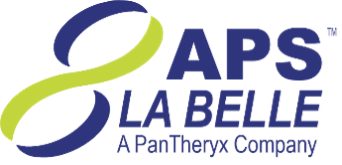I am learning to fly. What once was just a dream is now a reality. Here is my story as a soon-to-be aviator.
As you know I spent nearly 10 months in Afghanistan. While there, my home was just a few meters away from the flight line at Bagram Airfield. And I flew in both rotary and fixed-wing aircraft. My assignment required rapid assessments of agricultural conditions, and one way to do that is observing the landscape from the open door of a Blackhawk helicopter or the backdoor of a cargo transport C130E.
What you do not know is that I saved every penny of my military pay, including hazard pay, combat pay, overtime pay and Sunday pay. In short, it’s a tidy sum I had nothing to spend it on. This is what happens when the kids are raised and house is paid for. Indeed, many baby boomers take on such purchases, sometimes a motorcycle, boat or little, red sports car. I already own the sports car, a 1981 Mercedes Benz roadster, that guzzles gas. It is in the pole barn for winter storage, and given current fuel prices, it is likely to be there for a while, especially during winter.
Arriving back stateside, I began thinking about getting into an aircraft and beginning private pilot training. One approach is renting a fixed base operation (FBO) plane, in my case at Alma Community Airport, a choice of three Cessnas. I pay the rental fee, then buy the fuel and pay the instructor for ground and flight lessons.
I chose, instead, to buy outright an aircraft, thus avoiding the rental cost. I searched for about three months. Thankfully my flight instructor, Daryl Koch, helped me with my search. I had four sellers take me up in their planes. Three were based here in Michigan and one was in Indiana.
The airplane in Fort Wayne, Indiana, was my first choice. The aircraft is a Piper Cherokee 140 that has been modified to 183 horsepower. The avionics are instrument flight rated, including a recent addition of a new transponder and rebuilt radio. As you might expect in every airplane cockpit there are redundant systems. Mine has them, too.
The Piper is a low-wing model with a four-cylinder Lycoming air-cooled engine. Built in 1969, it has had three owners; now I am the fourth. The plane has a gross weight of 2,400 pounds with a cargo weight of just over 1,000 pounds, meaning the aircraft at empty weight and no fuel weighs just 1,400 pounds. The plane will seat four people, albeit in tight quarters. The plane needs a GPS instrument, which on the low end is a few thousand dollars and on the upper end is ... well, a lot of money. The piper has the original paint, whih someday should be done over.
I began my flight lessons the day after returning from Tajikistan. Daryl flew the plane from Fort Wayne to Alma. I have it parked in a T-hangar that protects it from weather. I have installed an oil sump heater so we can start the engine easier in winter.
I might comment here that the previous owner was losing his third-class medical certificate (health related), and unfortunately for him, he could not fly this aircraft any more. He had flown it for 13 years; he is a retired engineer.
I have logged 14 hours as of this writing. I recently completed my first solo flight. My flight instructor made the call, saying I was ready. I was pilot in command. It lasted 24 minutes and included three takeoffs and three landings.
Typically, to become private pilots, student need a third-class medical certificate, a minimum of 40 hours flying time and completion of three exams: a knowledge test (written), an oral exam and a checkride. The checkride is done with an FAA flight examiner. He rides with me in the right seat and asks me to perform all of the skills necessary to fly. Most student pilots require about 50 to 60 hours in the air to become testworthy. Once these tests are completed, the student pilot becomes a private pilot. And continuing education with flight proficiency testing is done on a regular basis so the license remains current.
My next step is learning about instrument flight-rule training and that means flying in clouds and to some point inclement weather.
I remember my father always dreaming of flying an airplane. He died one year ago this week, and henever got to pilot an aircraft.
Now I get to do that, and I am thrilled to put my feet on the rudder pedals, my right hand on the throttle control, my left hand on the yoke and leave the bounds of the runway.
To wit, never squander a dream, or let the road of difficulty overcome your pathway. For the next few months, one time or two per week (weather permitting), my pathway is “up there.” PD






